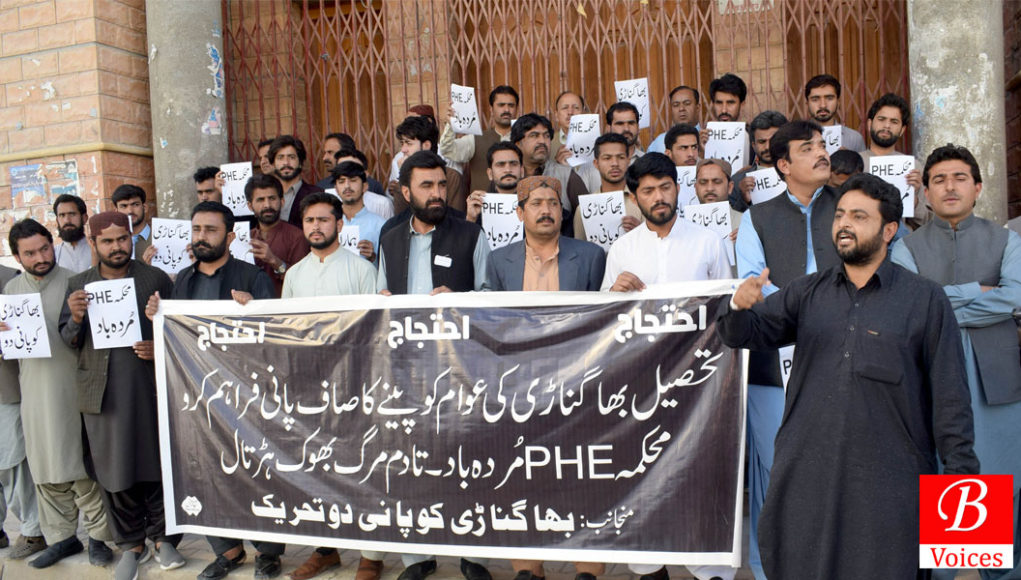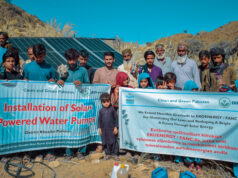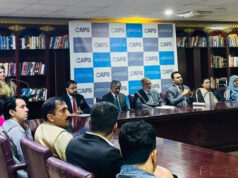Adnan Aamir
On March 1, nine people started marching to Quetta from Bhag and Nari towns of Balochistan. These people marched nearly 300 kilometers in scorching heat for 10 days to reach their destination. They people were not marching to set a record but to protest shortage of water. On reaching Quetta, the group was welcomed by Quetta Online Volunteers. Wafa Murad, leader of the group, said that it was tragic that in this modern age, the people of Bhag-Nari were drinking the same water as animals. He said that his group would stay in Quetta till their demands were met.
Bhag Nari is famous for its bull breeds across Pakistan. Situated south east of Quetta, the towns of Bhag and Nari are located in Kachhi district. People of Bhag-Nari say they have been facing water shortage for the last two decades. During this period, the government launched three water supply schemes at a total cost of Rs4 billion but neither of these was functional. Locals claim that at least 80,000 people have migrated from Bhag-Nari due to scarcity of water.
The three water supply schemes for Bhag-Nari are the Sanni, Kachhi and Shoran projects. However, there are problems with all of these schemes and they cannot cater to the needs of about 70,000 people living in these areas. Some of these projects remain incomplete while others can’t supply water due to electricity load shedding and low voltage.
The water crisis in Bhag-Nari made national headlines when former chief justice Saqib Nisar took suo moto notice of this problem. On December 14 last year, he ordered the government of Balochistan to establish a reverse osmosis (RO) plant within a month. However, this order was not implemented and Justice Nisar retired in January.
While Bhag Nari was suffering from acute water scarcity, the government was not coming for help despite orders from the Supreme Court. In such a situation, Wafa Murad established Bhag-Nari Ko Pani Do Tehreek (Movement for Safe Water for Bhag-Nari). After marching for 10 days, members of this movement reached Quetta and camped outside Quetta Press Club. On the day of their arrival, they got some coverage on social media but soon they were forgotten. For the next 18 days, Wafa Murad and his colleagues remained at their protest camp outside Quetta Press Club and also staged demonstrations. However, no one from the government took notice of their protest.
On March 28, Murad decided to take the next step: he announced a hunger strike till death.
With this announcement, the movement once again came in the spotlight. However, government officials were still reluctant about visiting the camp. On April 1, fifth day of the hunger strike, Murad’s health deteriorated and only then some government officials visited the camp.
Given the level of distrust between citizens and the government, Murad and his colleagues refused to believe in verbal promises of these officials. He made the Public Health Engineering (PHE) Department write these promises on a legally-binding stamp paper. The PHE committed in writing to make functional all three water supply schemes in Bhag-Nari, resolve the load shedding crisis and establish an RO plant a months’ time. Murad ended his strike after receiving these commitments. “We have postponed our hunger strike for five months on the request of government officials,” Murad told newsmen. He said that if the demands of his movement were not met, they would resume protest.
Murad’s protest is not a one-off case and in fact mirrors the prevalent situation in many parts of Balochistan. Pakistan’s largest province by area is facing water scarcity and the government apparatus is not capable of dealing with the situation.
Not only people are suffering from water-borne diseases but are also migrating away from their centuries-old abodes. There is a shortage of water for irrigation and this destroyed agriculture in the province.
To assist the government in developing a stronger irrigation system, World Bank agreed to fund Balochistan Integrated Water Resource Management and Development Project (BIWRMDP). The total cost of this project was $209 million and the World Bank committed to provide a loan of $200 million for this project. The basic purpose of this project was to strengthen the irrigation network in the province through community-based water management. However, last week, the World Bank suspended this project for a month due to lack of progress by the provincial government. It has provided a months’ time to ensure required progress on this project otherwise it will be canceled.
On Monday, Chief Minister Jam Kamal announced to take required action to resolve water scarcity problems of Bhag Nari. The government needs an elaborate strategy to deal with water scarcity in Balochistan.
This strategy should be long term and should address both drinking water and irrigation issues. Likewise, this strategy should also envisage overhauling and strengthening the PHE and irrigation departments of the provincial government.
Originally published in The Friday Times
Share your comments!








